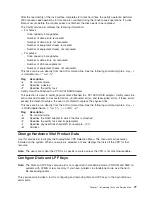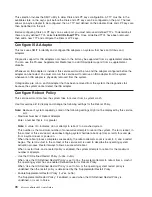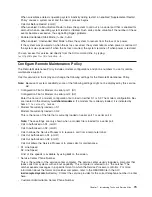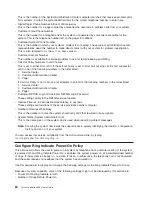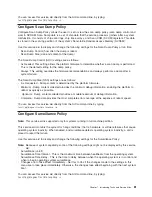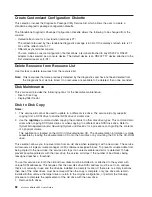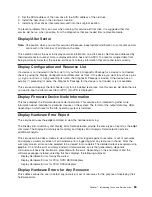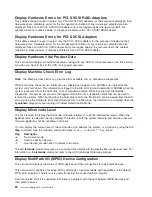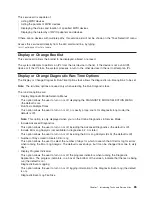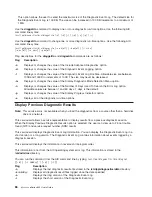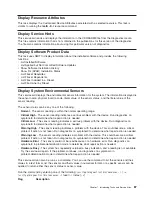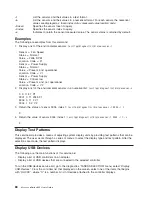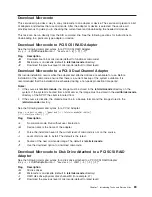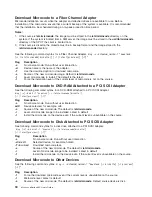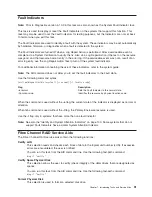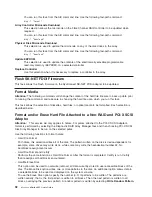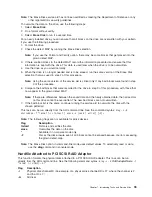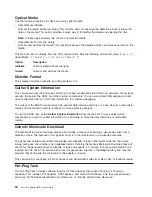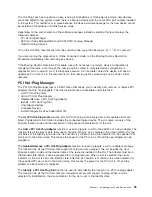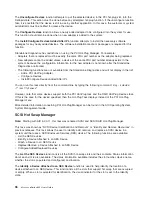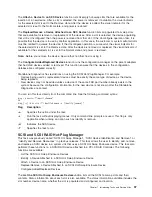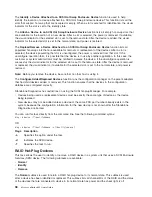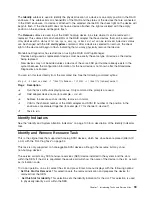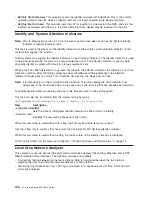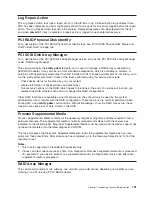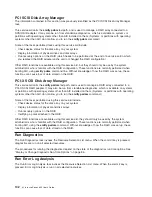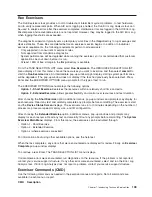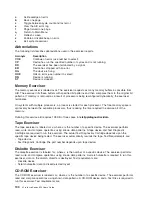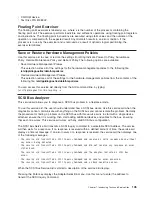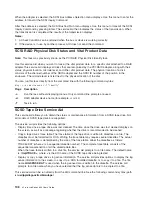
Fault
Indicators
Note:
Prior
to
Diagnostics
version
5.1.0.35,
this
task
was
also
known
as
the
System
Fault
Indicator
task.
This
task
is
used
to
display
or
reset
the
Fault
Indicators
on
the
systems
that
support
this
function.
This
task
may
also
be
used
to
set
the
Fault
Indicators
for
testing
purposes,
but
the
Indicators
are
not
set
back
to
normal
when
you
exit
this
task.
The
Fault
Indicators
are
used
to
identify
a
fault
with
the
system.
These
indicators
may
be
set
automatically
by
hardware,
firmware,
or
diagnostics
when
a
fault
is
detected
in
the
system.
The
Fault
Indicators
are
turned
off
when
a
Log
Repair
Action
is
performed.
After
a
serviceable
event
is
complete,
do
a
System
Verification
to
verify
the
fix.
Also
do
a
Log
Repair
Action
if
the
test
on
the
resource
was
good,
and
that
resource
had
an
entry
in
the
error
log.
If
the
serviceable
event
was
not
a
result
of
an
error
log
entry,
use
the
Log
Repair
Action
Task
to
turn
off
the
system
fault
indicator.
For
additional
information
concerning
the
use
of
these
indicators,
refer
to
the
system
guide.
Note:
The
AIX
command
does
not
allow
you
to
set
the
fault
indicators
to
the
Fault
state.
Use
the
following
command
syntax:
/usr/lpp/diagnostics/bin/usysfault
[-s
normal
]
[-l
location
code
]
Flag
Description
-s
normal
Sets
the
Fault
Indicator
to
the
normal
state.
-l
location
code
Identifies
the
resource
by
physical
location
code.
When
the
command
is
used
without
the
-s
flag,
the
current
state
of
the
indicator
is
displayed
as
normal
or
attention.
When
teh
command
is
used
without
the
-l
flag,
the
Primary
Enclosure
resource
is
used.
Use
the
-l
flag
only
in
systems
that
have
more
than
one
fault
indicator.
Note:
See
also
the
“Identify
and
System
Attention
Indicators”
on
page
100.
Some
systems
that
do
not
support
Fault
Indicators
have
a
similar
System
Attention
Indicator.
Fibre
Channel
RAID
Service
Aids
The
Fibre
Channel
RAID
service
aids
contain
the
following
functions:
Certify
LUN
This
selection
reads
and
checks
each
block
of
data
in
the
logical
unit
number
(LUN).
If
excessive
errors
are
encountered,
the
user
is
notified.
You
can
run
this
task
from
the
AIX
command
line.
Use
the
following
fast-path
command:
diag
-T
"certify"
Certify
Spare
Physical
Disk
This
selection
allows
the
user
to
certify
(check
integrity
of
the
data)
drives
that
are
designated
as
spares.
You
can
run
this
task
from
the
AIX
command
line.
Use
the
following
fast-path
command:
diag
-T
"certify"
Format
Physical
Disk
This
selection
is
used
to
format
a
selected
disk
drive.
Chapter
7.
Introducing
Tasks
and
Service
Aids
91
Summary of Contents for p 655 series
Page 1: ...pSeries 655 User s Guide SA38 0617 03 ERserver...
Page 2: ......
Page 3: ...pSeries 655 User s Guide SA38 0617 03 ERserver...
Page 10: ...viii Eserver pSeries 655 User s Guide...
Page 14: ...xii Eserver pSeries 655 User s Guide...
Page 16: ...xiv Eserver pSeries 655 User s Guide...
Page 24: ...6 Eserver pSeries 655 User s Guide...
Page 32: ...14 Eserver pSeries 655 User s Guide...
Page 36: ...18 Eserver pSeries 655 User s Guide...
Page 90: ...72 Eserver pSeries 655 User s Guide...
Page 144: ...126 Eserver pSeries 655 User s Guide...
Page 208: ...190 Eserver pSeries 655 User s Guide...
Page 214: ...196 Eserver pSeries 655 User s Guide...
Page 217: ......

